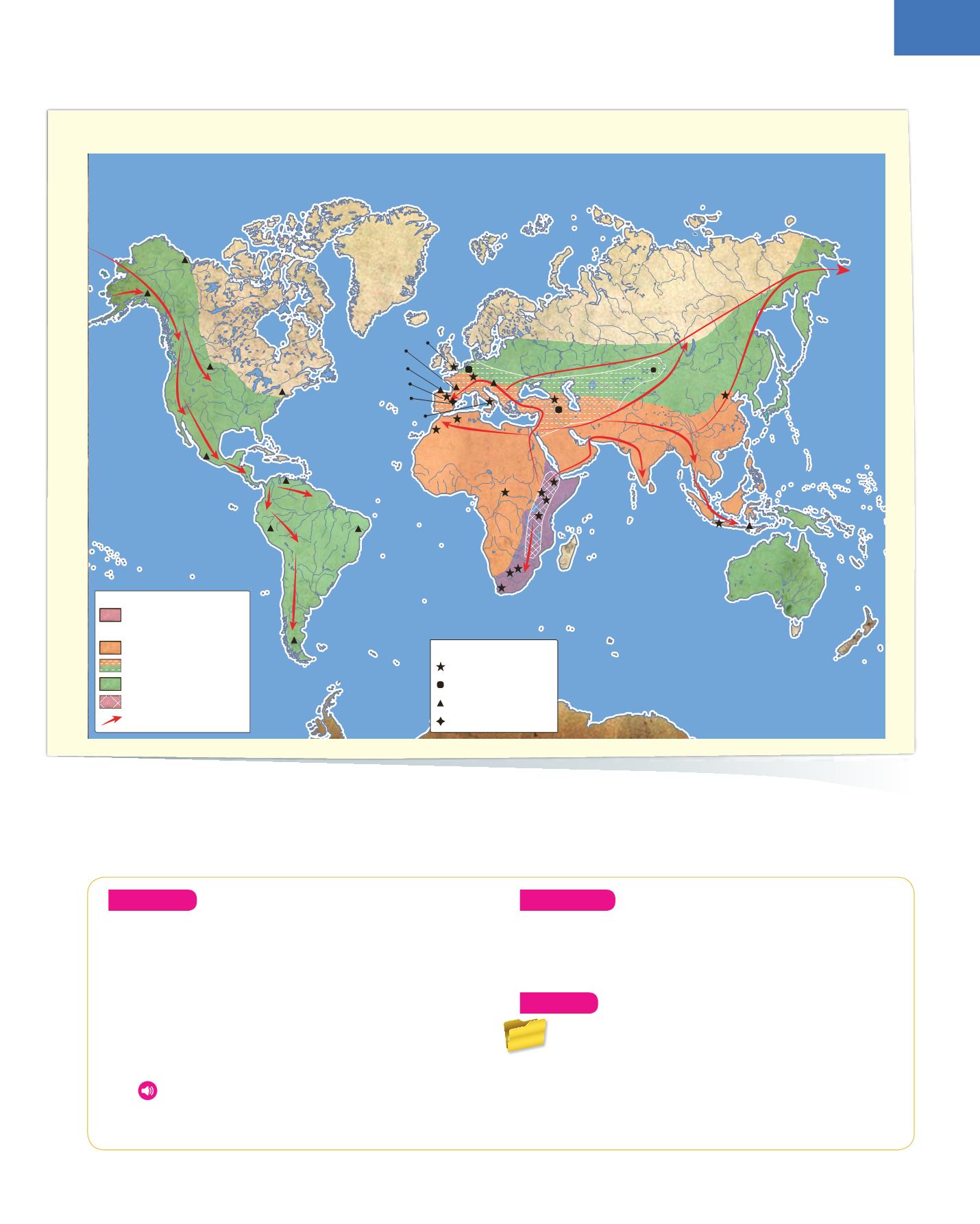
1
1. Prehistory: the Paleolithic Period
15
THE EXPANSION OF THE GENUS HOMO
Lower Paleolithic
Middle Paleolithic
Upper Paleolithic
Epipaleolithic
Main sites
Australopithecus and
Homo habilis
Homo erectus
Homo neanderthalensis
Homo sapiens
Rift Valley
Routes of expansion
Areas of expansion
Turkana
Hadar
Olduvai
Omo
Taung
Sterkfontein
Zoukoudien
Trinil (Java)
Liang Bua
Island of Flores
Dmanisi
Ceprano
Atapuerca
Heidelberg
Lascaux
Willendorf
Altamira
Neander
Shanidar
Denisova
Valltorta
Swanscombe
Elandsfontein
Bodo
Ternifine
Salé
Los Toldos (12000 B.C.)
Pikimachay
(14000 B.C.)
Tlapacoya
(22000 B.C.)
Muaco (14000 B.C.)
Lagoa Santa
(10000 B.C.)
Meadowcroft
(19000-14000 B.C.)
Taber
(40000 B.C.)
Dry Creek
(15000-12000 B.C.)
Old Crow
(27000 B.C.)
A
MERICA
E
UROPE
A
FRICA
A
SIA
O
CEANIA
Analyse
13.
Look at the images that show how Paleolithic tools
evolved. Do you think they reflect the gradual
increase in human intelligence? Why?
14.
On an
outline worldmap
, copy the routes of hominid
expansion. Determine which period they left Africa
in, look at where each species settled and calculate
how long this process took. Then write a paragraph
to explain this.
16.
Look at the tools on the previous page. Listen and
identify the tools described and say which period they
belonged to.
Evaluate
15.
Think about how long the Paleolithic Period
lasted. Do you think technology is advancing
more quickly or more slowly as time passes?
Create
17.
Research one of the sites on the map in detail or
choose the site that is near to where you live. What
period are the tools that were discovered there
from? Have remains of hominids been found there?
Which species are they from?


